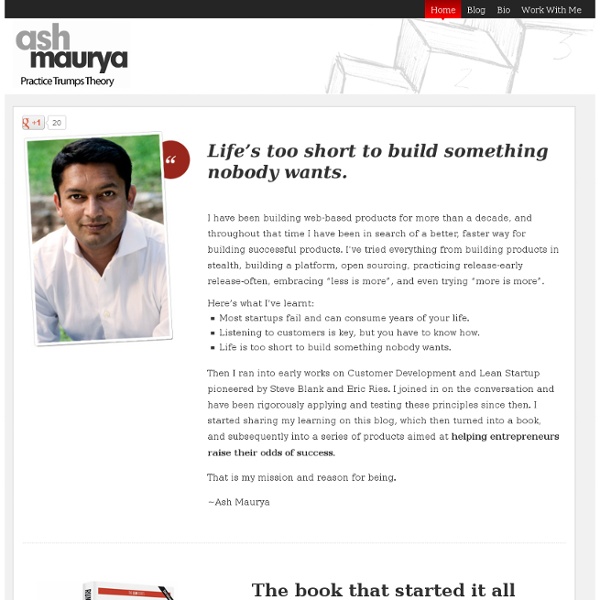Ash maurya — Practice Trumps Theory: Lean Startup + Customer Development + Bootstrap
Sermo.com
Lessons Learned
Home :: Conversive
The tools, expertise, and resources needed to properly implement and integrate your new Avaya Contact Center Solutions.
Business Model Validation Software - Lean Startup Canvas
Venture Hacks - Good advice for startups.
Related:
Related:



